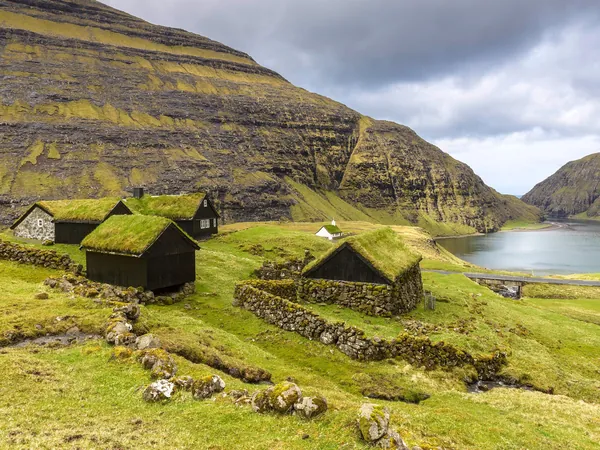
New Genetic Findings Reveal Unique Viking Lineages in the Faroe Islands and Iceland
2024-11-25
Author: Sarah
Groundbreaking Study Reveals Significant Genetic Differences
In a groundbreaking study, geneticists have uncovered significant differences between the Viking settlers of the Faroe Islands and those of Iceland by examining the distribution of Y-chromosome haplogroups in these regions. This fascinating research highlights how Viking expansion into the North Atlantic was more diversified and complex than previously understood.
Genetic Profiles: Faroe Islands vs. Iceland
By employing advanced analytical methods, the team found that the genetic profile of men from the Faroe Islands closely matches that of contemporary populations in Norway and Denmark, with some influences from Sweden. In stark contrast, the results indicated a distinct genetic makeup for Icelandic settlers, suggesting that while both regions were colonized during the Viking Age, their genetic roots trace back to different Scandinavian backgrounds.
The Viking Age: Expansion and Colonization
The Vikings, famed for their extraordinary seafaring capabilities, played a crucial role in the exploration of vast territories from the late eighth century to around 1050 CE. Their voyages took them across the Atlantic to places as far as Newfoundland and Greenland, as well as into the Mediterranean and beyond. The Faroe Islands, consisting of 18 islands situated in the North Atlantic, were among their many settlements. Archaeological evidence suggests that these islands were not uninhabited prior to Viking arrival, with potential earlier residents including Celtic monks from the British Isles.
Historical Context: The Færeyinga Saga
According to the historical Færeyinga Saga, a notable Viking leader named Grímur Kamban is said to have settled the Faroe Islands between 872 and 930 CE. Understanding the origins of Grímur and his followers has been the focus of recent genetic research.
Expert Insights on Genetic Diversity
“Our findings provide robust evidence that the settlement of the Faroe Islands was carried out by a heterogeneous group of male settlers representing various Scandinavian populations,” explained Dr. Christopher Tillquist, a lead researcher from the University of Louisville, Kentucky. His co-authors included Dr. Allison Mann from the University of Wyoming and Dr. Eyðfinn Magnussen from the University of the Faroe Islands.
Methodology: Analyzing Y-Chromosome Data
The research involved analyzing Y-chromosome data from 139 men across the Faroese islands of Borðoy, Streymoy, and Suðuroy. By comparing this data with that from 412 men from Norway, Sweden, Denmark, Iceland, and Ireland, the scientists successfully reconstructed the genetic foundation of the Viking settlers.
Innovative Techniques in Genetic Research
This innovative study also introduced a new genetic analysis technique called "Mutational Distance from Modal Haplotype" which enabled the researchers to examine genetic variations in more depth. The data revealed a "founder effect," where the historical colonization of the Faroe Islands by a small group of Vikings had led to a reduction in genetic diversity, a trait that persists in the modern populations today.
Challenging Assumptions About Viking Settlements
Critically, the study confirms a long-held assumption that the settlers of the Faroe Islands and Iceland shared a common genetic background; however, the reality is much more intricate. “What we've discovered is that a genetically diverse group established itself in the Faroe Islands, while a more genetically distinct group set forth to colonize Iceland, with little to no interbreeding occurring between the two populations over time,” noted Tillquist.
Implications for Viking History and Future Research
With these findings, researchers are offering a new lens through which to understand Viking history and their explorations. Each longship that ventured to these distant islands carried not only Vikings but also unique genetic legacies that can now be traced, reshaping the narrative of Viking conquests and settlements. This exciting genetic evidence reaffirms the complexity of Viking exploration and opens doors for further studies into the genealogical threads that connect modern populations to their storied ancestors.



 Brasil (PT)
Brasil (PT)
 Canada (EN)
Canada (EN)
 Chile (ES)
Chile (ES)
 España (ES)
España (ES)
 France (FR)
France (FR)
 Hong Kong (EN)
Hong Kong (EN)
 Italia (IT)
Italia (IT)
 日本 (JA)
日本 (JA)
 Magyarország (HU)
Magyarország (HU)
 Norge (NO)
Norge (NO)
 Polska (PL)
Polska (PL)
 Schweiz (DE)
Schweiz (DE)
 Singapore (EN)
Singapore (EN)
 Sverige (SV)
Sverige (SV)
 Suomi (FI)
Suomi (FI)
 Türkiye (TR)
Türkiye (TR)